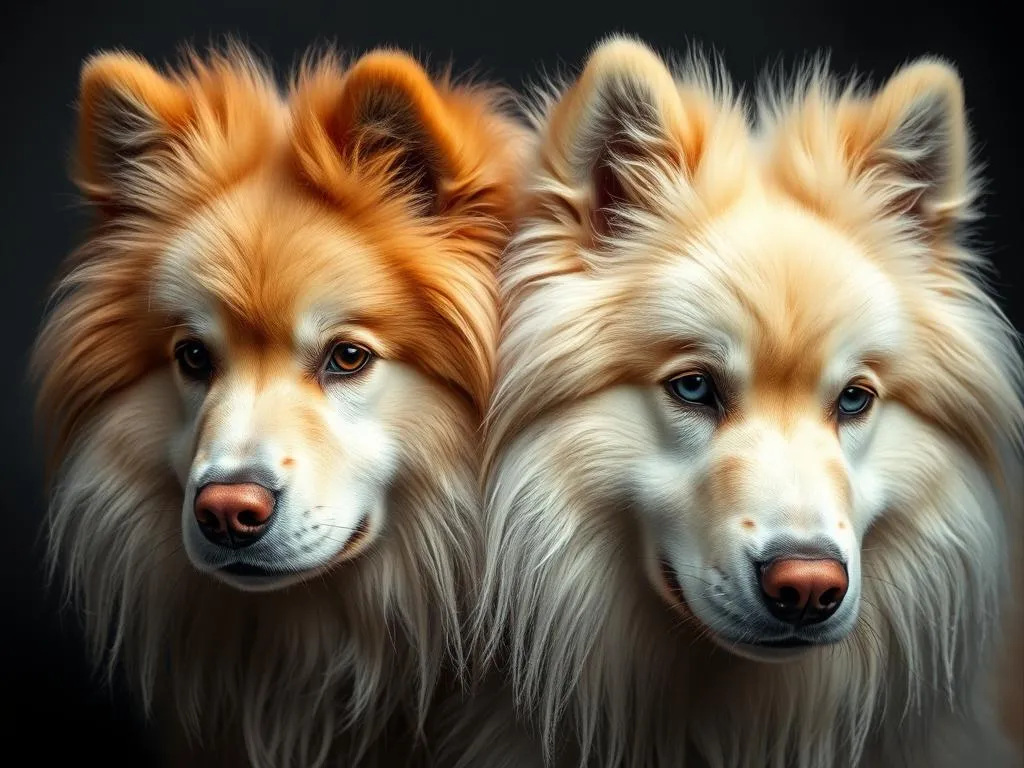
Introduction
The Samoyed is a beloved breed known for its friendly disposition, fluffy white coat, and captivating smile. Originating from Siberia, these dogs were initially bred by the Samoyedic people to herd reindeer and pull sleds, showcasing their incredible strength and endurance. While their personality and work ethic are crucial aspects of the breed, the coat color of a Samoyed also plays an important role in their overall appeal and breed standards. In this article, we will delve deep into the various Samoyed colors, exploring their meanings, the genetics behind them, and what potential owners should consider when selecting their furry companion.
Understanding the Samoyed Breed
History of the Samoyed
The history of the Samoyed breed dates back thousands of years, with roots tracing back to the nomadic tribes of Siberia. These dogs were not just companions; they were integral to the survival of the Samoyedic people, serving as hunting, herding, and sledding partners. The breed’s resilience in harsh Arctic conditions showcases its adaptability and strength. Beyond their practical uses, Samoyeds were also cherished family members, often sleeping alongside their owners to provide warmth during frigid nights.
Characteristics of Samoyeds
Samoyeds are medium to large-sized dogs, with a sturdy build that reflects their working heritage. Males typically weigh between 45-65 pounds, while females range from 35-50 pounds. Their signature feature is their double-layered coat, which not only provides insulation but also gives them that characteristic fluffy appearance.
In terms of temperament, Samoyeds are renowned for their friendly and gentle nature. They are extremely social dogs, often forming strong bonds with their families and being particularly good with children. However, they do require regular exercise and mental stimulation to keep them happy and healthy, as they can become bored and exhibit destructive behaviors if not adequately stimulated.
Grooming is another critical aspect of owning a Samoyed. Their thick, fluffy coat requires regular brushing to prevent matting and to manage shedding, especially during seasonal changes.
Overview of Samoyed Colors
Standard Colors
The Samoyed breed is primarily recognized for a few standard colors, which include:
- White: The most common and recognizable color, symbolizing purity and strength. A pure white Samoyed is often seen as an ideal representation of the breed.
- Cream: This shade is slightly off-white, adding warmth to the dog’s appearance. Cream Samoyeds are also popular among enthusiasts.
- Biscuit: A light tan color that adds a unique touch to the breed. Biscuit Samoyeds may have a hint of gold in their coat.
- Gold: This deeper shade of tan or yellow is less common but certainly striking. Gold Samoyeds stand out for their vibrant hue.
Non-Standard Colors
While the standard colors are most recognized, there are also non-standard colors that can appear in Samoyeds:
- Gray: This color can range from silver to charcoal and often results from a mixing of genes not typically seen in purebred Samoyeds.
- Black: A rare color in the breed, black Samoyeds can be striking but may face challenges in breed recognition.
- Brown: Another uncommon color, brown Samoyeds can vary from a light cocoa to a darker chocolate hue.
- Recessive Colors: These may include various shades that result from genetic variations but are not recognized by breed standards.
Understanding these colors can give potential owners insight into the genetic diversity of the breed and what to expect in terms of appearance.
The Genetics of Samoyed Colors
Coat Color Genetics Basics
The genetics behind Samoyed colors can be quite complex. Each dog’s coat color is determined by various genes, each contributing to the final appearance of the dog. In genetics, traits can be classified as dominant or recessive. Dominant traits are expressed even if only one copy of the gene is present, while recessive traits require two copies to be expressed.
Specific Genes Influencing Samoyed Colors
Several key genes influence the coat color of Samoyeds:
- Agouti Gene: This gene controls the distribution of pigments in the dog’s coat and can lead to various shades and patterns.
- Extension Gene: This gene is responsible for determining whether the coat will be black or red, influencing the overall appearance of the dog.
Understanding these genes can shed light on why certain colors are more common than others and how they occur within the breed.
How Color Affects Health
There are common misconceptions linking coat color to health issues in dogs. While certain colors may be associated with specific genetic conditions, it is essential to avoid generalizations. Some believe that lighter-colored dogs are more prone to skin issues, but this is not universally true. It’s vital for potential owners to prioritize the overall health and genetics of the dog, rather than focusing solely on color.
The Role of Color in Breed Judging
Show Standards
In dog shows, the Samoyed’s coat color can play a pivotal role in judging. Breed standards set by organizations such as the American Kennel Club (AKC) outline the preferred colors and characteristics that judges look for. Dogs that adhere closely to these standards are often favored in competitions.
Judges’ Perspectives
Insights from breed judges indicate that while color is an essential factor, it is not the sole determinant of a dog’s success in competitions. Judges often look for overall conformation, temperament, and presentation. However, a striking coat color can catch a judge’s eye, adding to the dog’s appeal in the show ring.
Choosing a Samoyed Based on Color
Personal Preferences
When selecting a Samoyed, personal preference regarding color can play a significant role. Consider what color resonates with you and fits your lifestyle. Some owners may prefer the classic white, while others might find the cream or gold variations more appealing.
Practical Considerations
While aesthetics are essential, practical considerations should also come into play. The grooming needs of different colors can vary. For instance, lighter colors may show dirt and stains more readily than darker shades, requiring more frequent grooming and cleaning. Additionally, visibility in outdoor settings can be a concern; darker colors may stand out better in low-light conditions, enhancing safety during walks.
Caring for a Samoyed’s Coat
Grooming Routine
Maintaining a Samoyed’s coat requires dedication. Regular grooming is essential to keep their fluffy fur in top condition. Recommended tools include:
- Slicker brushes for detangling
- Undercoat rakes to manage shedding
- De-shedding tools for seasonal changes
The frequency of grooming largely depends on the color and type of coat. Lighter-colored coats may require more frequent grooming to stay clean and free of mats compared to darker shades.
Seasonal Changes
Samoyeds are known to shed significantly during seasonal changes, particularly in spring and fall. Different colors may affect the visibility of shedding fur, with white fur being more noticeable on dark surfaces. Implementing a seasonal grooming routine can help manage this shedding and keep your home clean.
Conclusion
Understanding Samoyed colors is an essential part of appreciating this remarkable breed. From the historical significance and physical traits to the genetic implications and care requirements, knowing more about the colors can help potential owners make informed decisions. Each Samoyed, regardless of color, brings unique joy and companionship, and their variety of colors adds to their charm. Whether you are drawn to the classic white or the unique biscuit shade, each color has its own story and significance. As you consider welcoming a Samoyed into your life, take the time to explore and appreciate the beautiful variety within this beloved breed.









